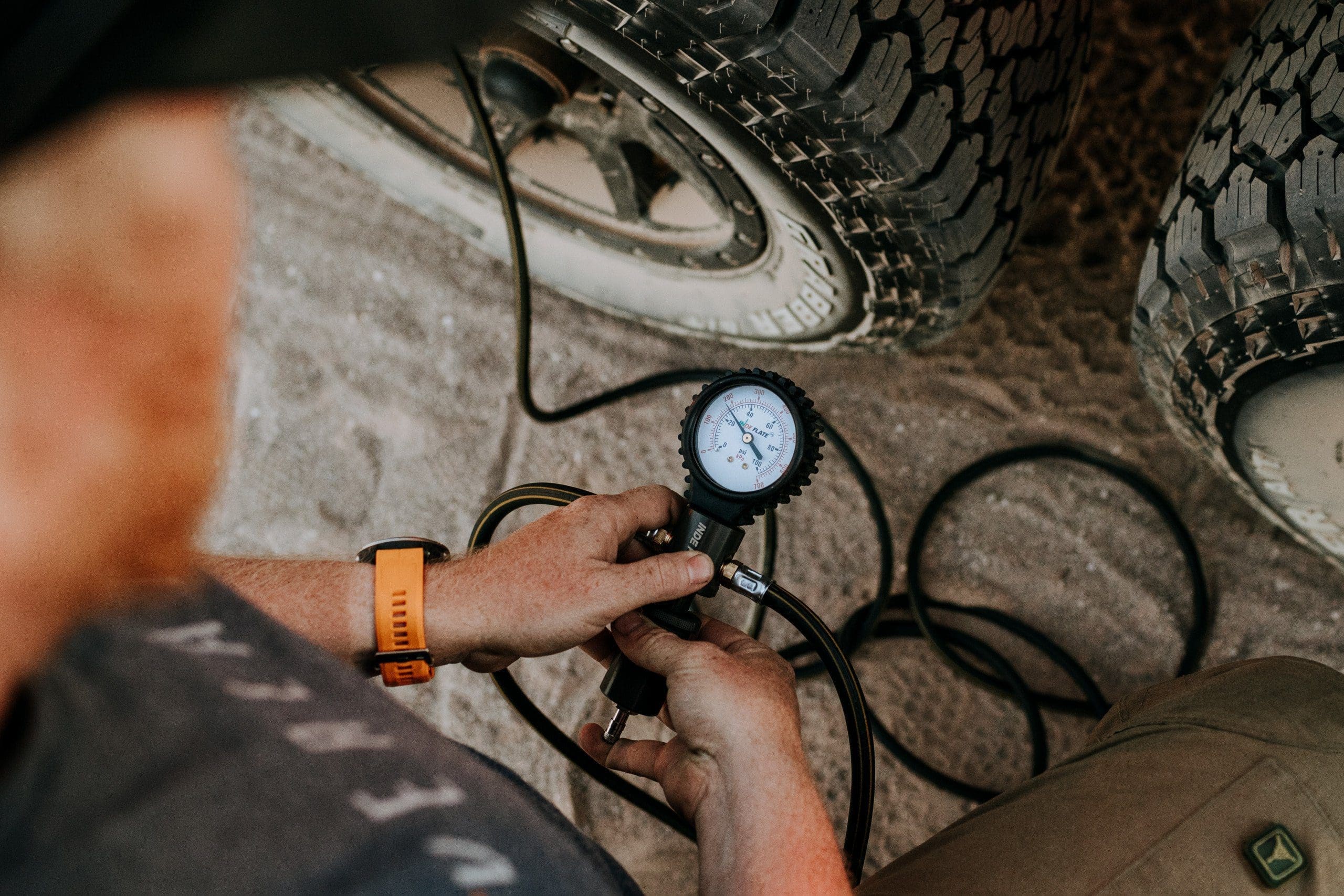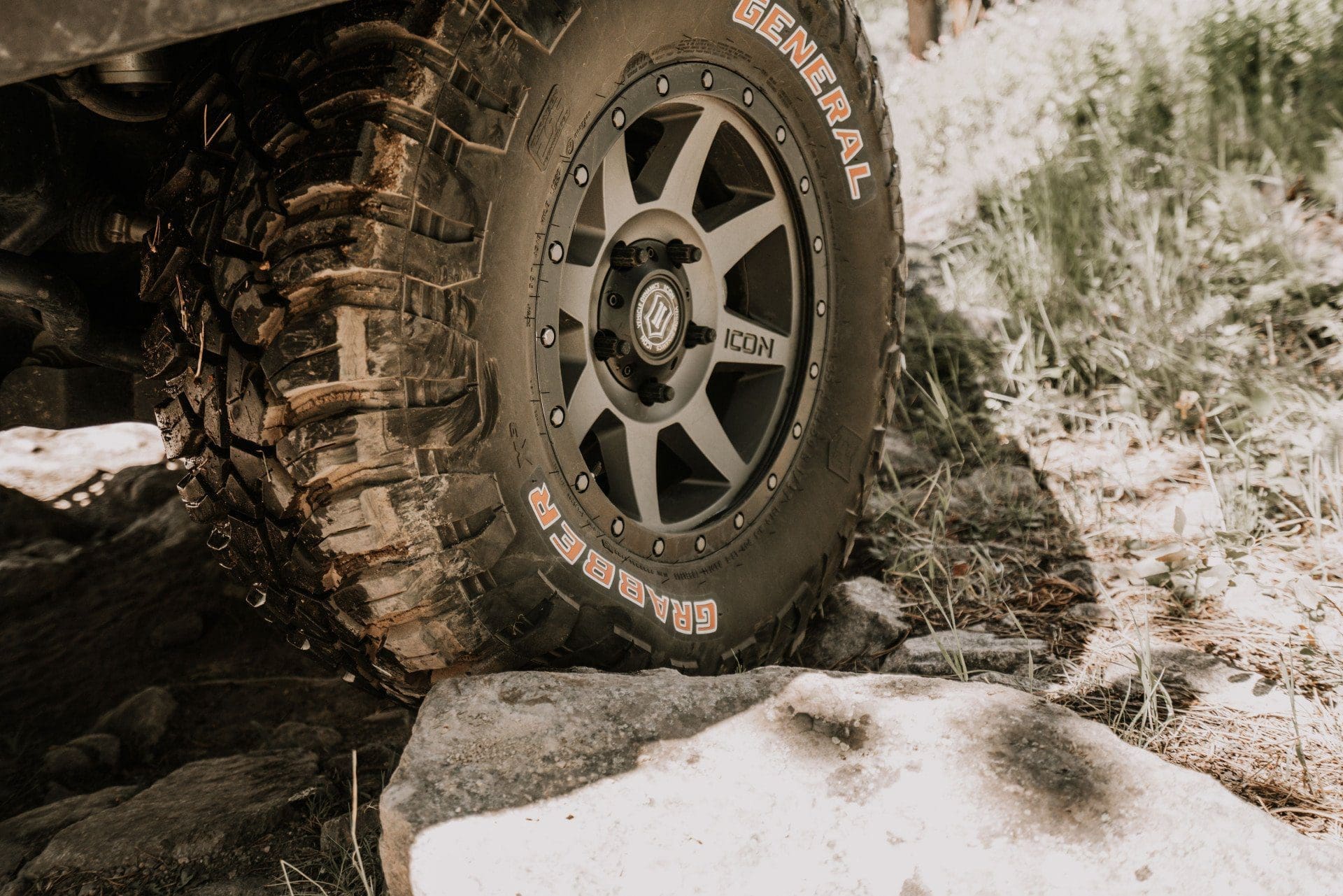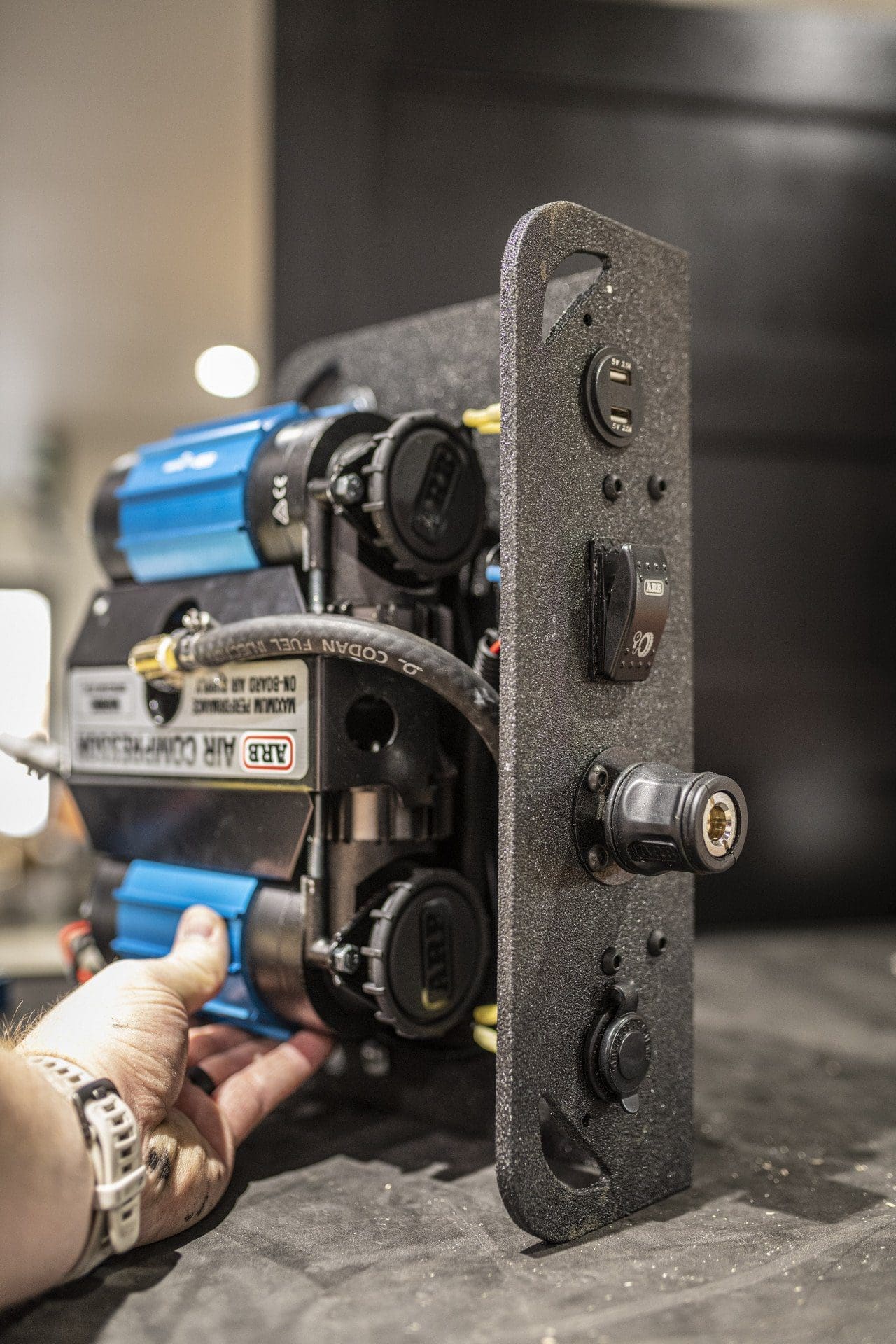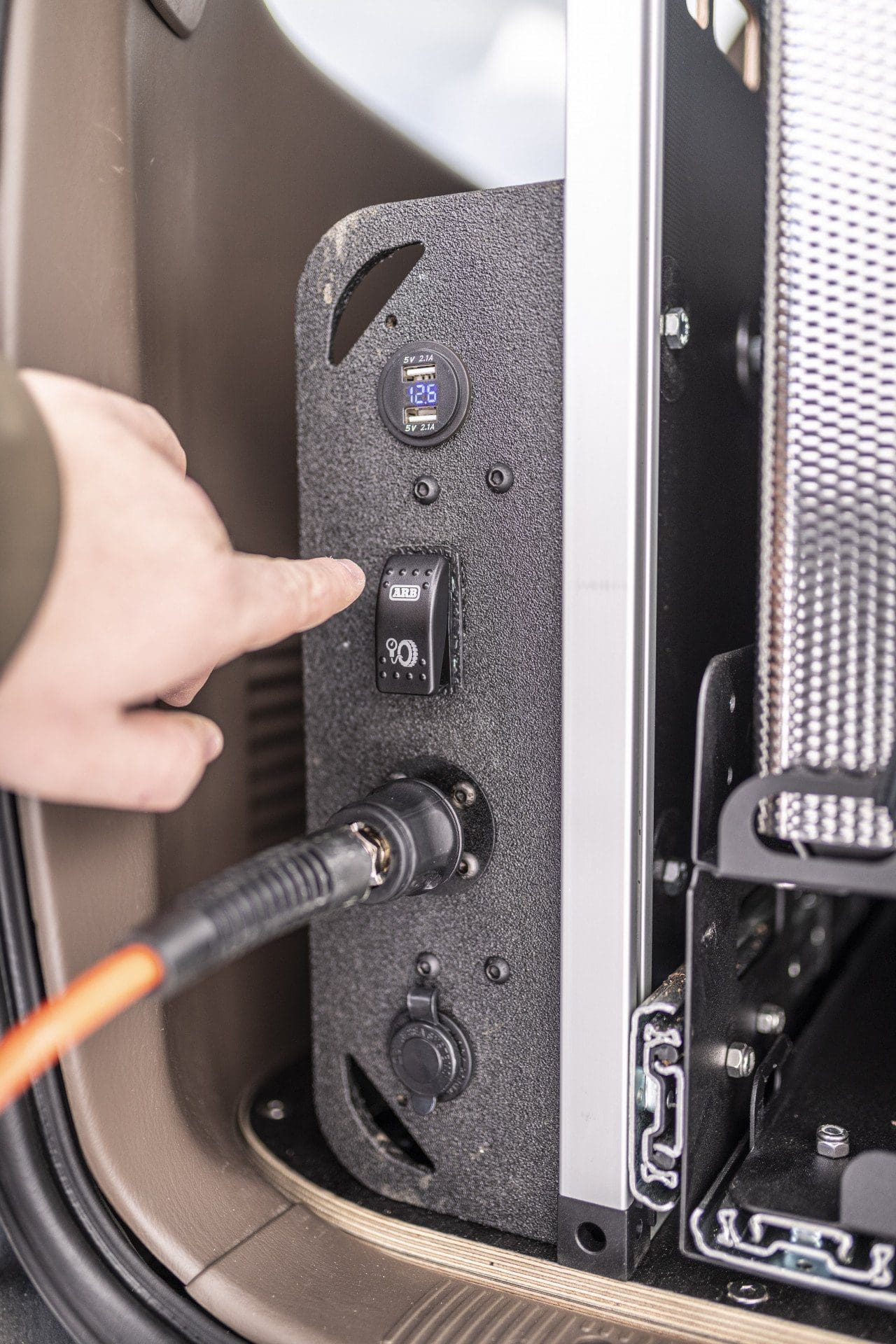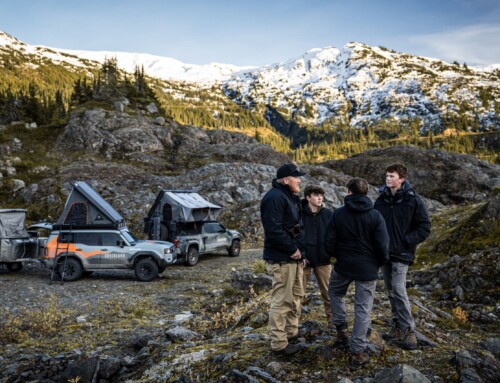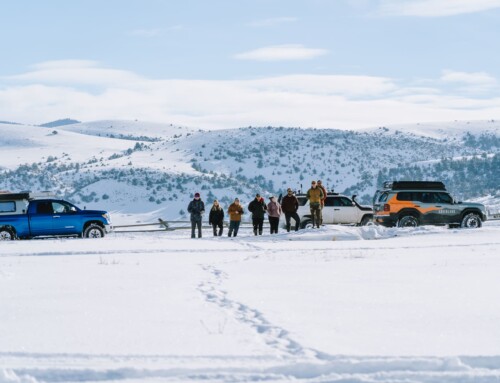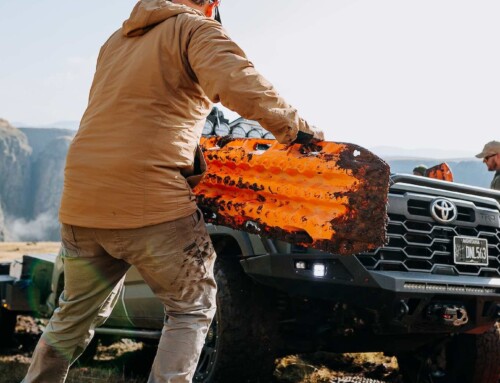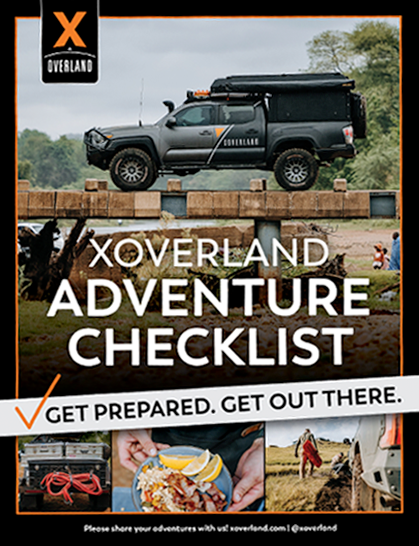For those of you who aren’t quite ready to invest in an upgraded suspension kit but are looking to tackle tougher trails and create a more comfortable ride, there is a simple, straightforward and (relatively) inexpensive solution. One of the easiest and least expensive ways to improve off-road traction and create a smoother ride (without making any modifications to your vehicle) is to decrease tire pressure by airing down your vehicle’s tires.
We are often asked what specific psi (pounds per square inch) we run our tires at. One size doesn’t fit all when it comes to tire pressure and optimal psi varies depending upon the terrain, vehicle and weather conditions, so we can’t recommend a number specific to your unique situation. There are, however, various ways to determine the best psi for your vehicle and the terrain you are driving on. We can also recommend several pieces of gear that make both airing up and down much easier. Let’s dive in.
Why Airing Down Creates a Smoother Ride
Tire pressure influences many important characteristics of vehicle performance, such as driving comfort, directional stability, cornering, and braking grip, plus the general handling behavior. – General Tire
Aired Down Tires = Bigger Contact Patch
Airing down can increase tire length by up to 80% and tire width up to 20%, resulting in an expanded surface area of the contact patch — which is the area where your tire contacts the ground. As the contact patch increases, the better the tire is able to grip the terrain and smoothen out the ride over rough, washboard-laden roads or technical obstacles.
Sidewall Deflection
Sidewall deflection is defined as the amount that the sidewall bulges as the tire squats with lower tire pressure. Sidewall deflection allows your tire to form nicely around obstacles like roots and rocks, which in turn improves traction and creates a smoother ride. At a higher pressure, tires have a tendency to push away from obstacles instead of absorbing them, resulting in a jarring ride and poorer off-road performance.
It Gives Your Suspension a Break
As airing down helps the vehicle absorb impacts more effectively, it also removes some of the force transferred to the driveline, steering and suspension parts. Reducing wear and tear saves money in the long-term, and lengthening the lifetime of any vehicle component is a win in our books!
At What Pressure Should You Run Your Tires?
As we have said, there is no “magic” psi that works for all trucks in all scenarios, but there are a few general rules to follow and some tips and tricks that have worked for us.
Our friend and I4WDTA Master Trainer Nena Barlow wrote a helpful piece for fourwheeler.com called The Pressure: Where Should You Run Your Tires? Nena starts by “dropping the tire pressure by 10 psi below the usual highway tire pressure, or what the placard on the door jam says the tire pressure should be.”
You’ll find the manufacturer’s optimum or recommended tire pressure for your car on a sticker in the driver’s side door panel or in your owner’s manual. Keep in mind that the recommended specifications are based on cold inflation pressure. – General Tire
We’ve applied this method to our 2016 Tacoma and 2018 Tundra. The placard psi on our 2016 Tacoma is 29 (front) to 32 psi, so dropping 10 psi would be 19 to 22. This is in comparison with our 2018 Tundra, which has a recommended psi of 30 (front) and 33 (rear). Dropping 10 psi would be 20 to 23. This is a great starting point.
When we know we will be spending a lot of time in the sand, such as the Altar Desert from Episode 9 of The Great Pursuit series, we air down to about 15 pounds of pressure. However, making this decision depends upon the time of day. Sand contains more moisture content in the mornings, so you can get away with a higher pressure (say, 18-20 lbs). If it’s late afternoon, we may go all the way down to 12 pounds of pressure, being careful not to turn our wheels too aggressively to avoid breaking a bead.

As you can see, there is no ‘one size fits all’ here. The best way to determine the ultimate psi for your vehicle is to go out and experiment! Remember, it’s always easier to take air out of your tires than it is to put it back in, so go slow and decrease in small increments.
If you’re running an off-road trailer, don’t forget to air down those trailer tires when appropriate!
If you are not running a beadlock wheel, it is crucial to avoid dropping your tire pressure too low. Without a locking mechanism to secure the bead of the tire, a low psi can cause the tire to de-bead.
Another safety precaution: always remember to air up your tires before returning to highway speeds. Failing to do so could result in damage to the tires or a blow-out. With that in mind, we’ve listed a few of our favorite tire accessories that have helped simplify our airing up and down process.
The Gear: Air Compressors, Deflators and Tire Pressure Gauges
Why You Should Carry An Air Compressor in Your Vehicle
Since tire failure—whether a simple puncture, losing a bead, or damaging a sidewall—is still the number one cause of vehicle breakdowns, a high-quality compressor is one of the most important recovery tools to carry in your vehicle.
An air compressor allows you to inflate your tires after airing down for a day on the trail or when you’re stuck and need to air down in order to recover your vehicle. If you have a tire puncture or a tire that comes off the bead, you’ll require an air compressor to inflate that tire after the initial repair.
There are many options that vary in cost, performance, and ease of use, but the two most popular options are on-board compressors and portable air compressors.
On-Board Compressors
An on-board air compressor allows you to activate your air lockers and inflate large off-road tires quickly after a long day out on the trail. They typically provide a higher output, measured in cubic feet per minute (CFM), compared to a portable air compressor and are very convenient since they’re permanently mounted in your vehicle.
If you are installing air lockers you’ll need an on board air compressor, otherwise a portable air compressor will likely do the trick.
Our go-to is the which we’ve installed in our 3rd Gen 4Runner, Tacoma, Tundra and Land Cruiser builds. With twin motors, this is the largest air compressor kit that ARB offers, giving users the ability to air up large tires quickly. The kit attaches permanently to the vehicle, typically in an engine bay.
Portable Compressors
Portable compressors are easily carried or moved and do not require permanent installation. Therefore, they are easily transported from the vehicle to storage or another vehicle and do not require additional cost for installation. The single application easily airs up/down tires for proper tire inflation.
We recommend a battery clamp-on style versus a cigarette lighter plug due to the high amp draw of the compressor. Many cigarette lighters don’t have wiring suited to high amperage draws, so we err on the side of caution.
Indeflate Two Hose Unit
This is our #1 go-to for airing up and down on XOverland trips. The allows you to inflate OR deflate two tires at the same time with matched pressure. The device has locking clamps that hold tire stems securely. When you are ready to air back up, it is easy to connect the body with an air compressor before packing away in the carry case.
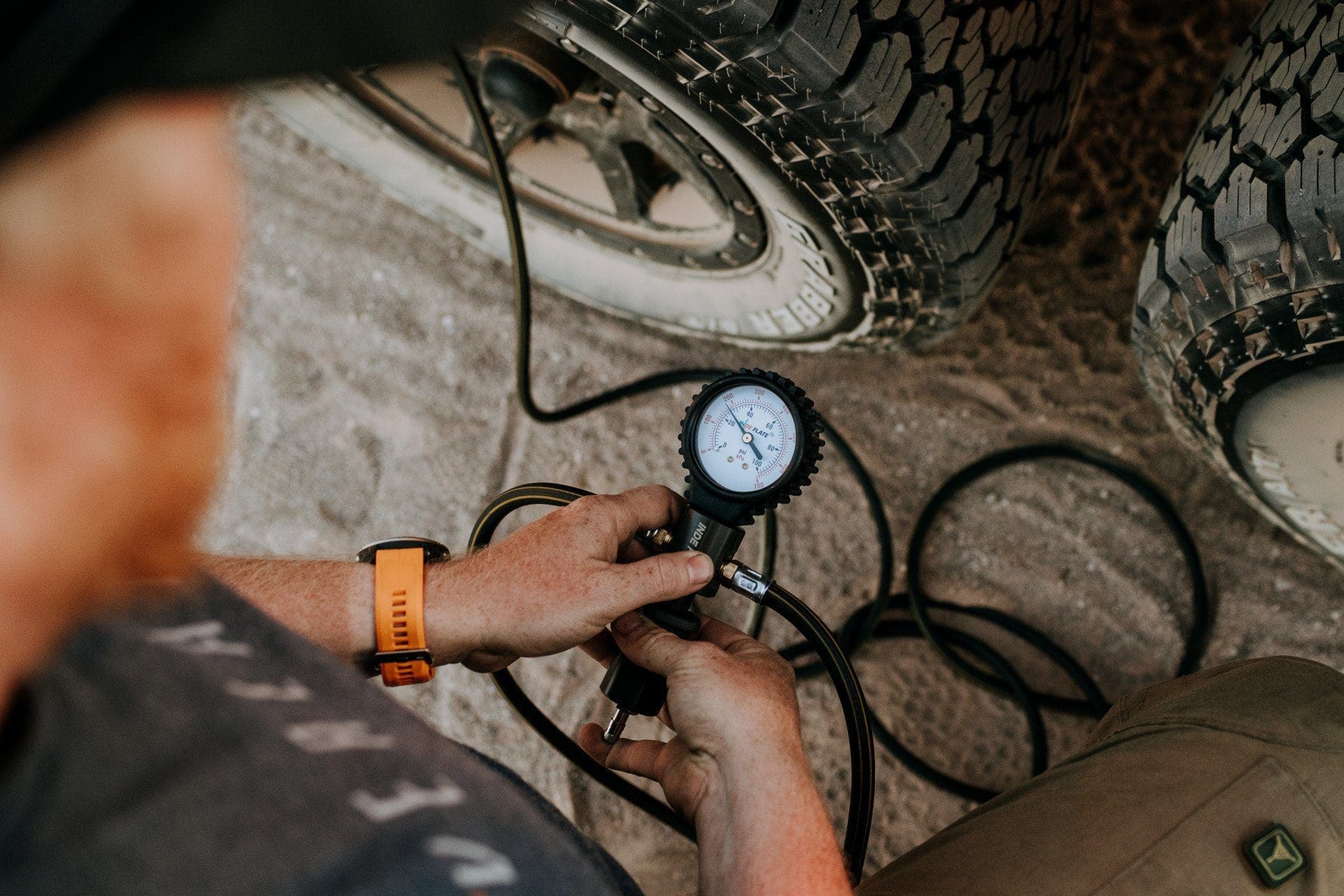
ARB E-Z Deflator
A simple piece of kit that works great for airing down individual tires, the is also one of our go-to accessories. This tool works by removing the valve core for rapid tire deflation, while also providing accurate pressure reading via the simple movement of a sliding valve.
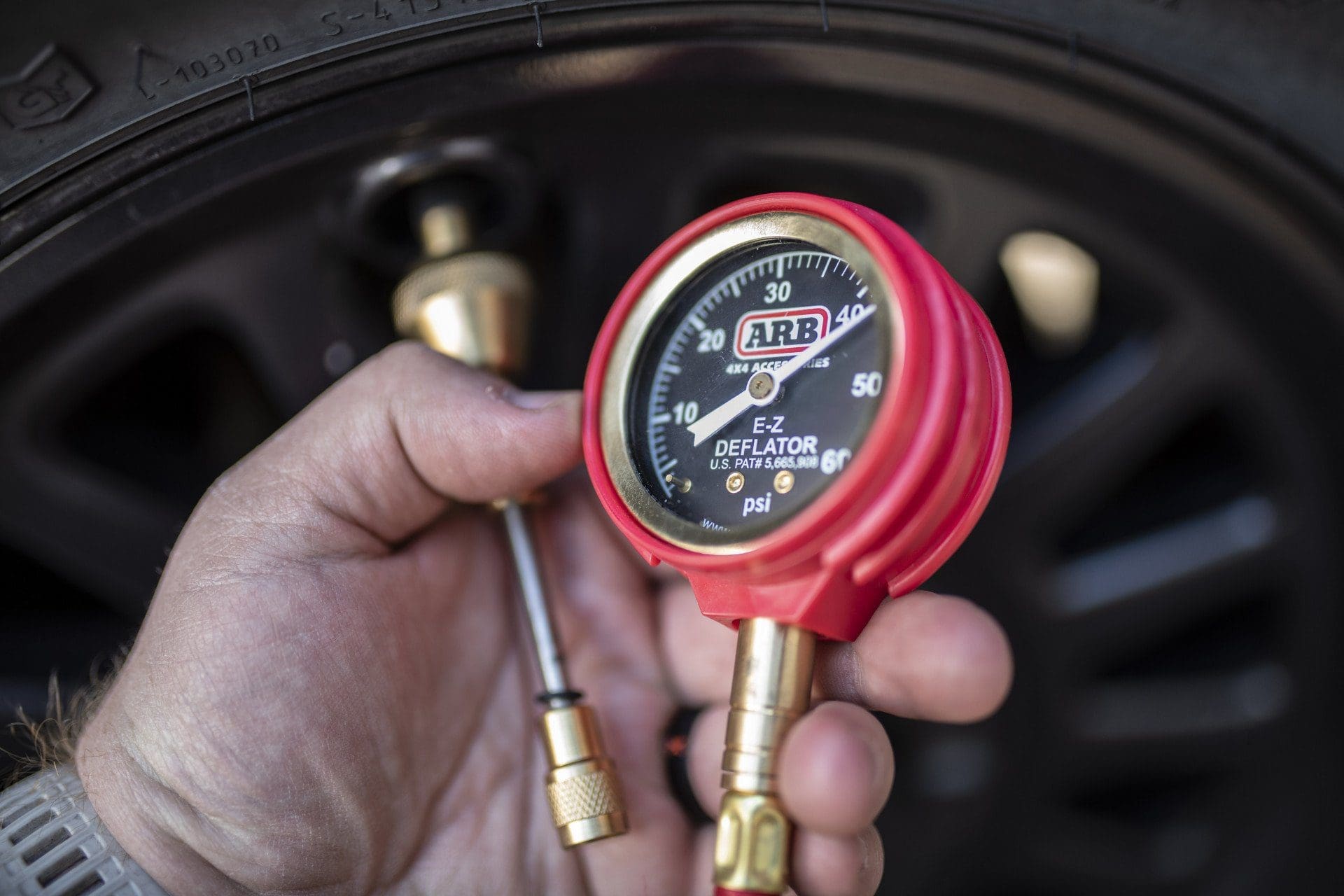
Tire Pressure Gauges
We find tire pressure gauges are a quicker and more accurate tool to check air pressure, so we always bring along a few tire pressure gauges per vehicle. Stashing them in door pockets around the vehicle, makes for quick and easy access. Like pens, they seem to disappear frequently so we like to have lots on hand.
We hope this post has provided some insight into the basics of airing down, and which products can help do so quickly and efficiently!
Drop us a comment below! Do you air down regularly and use tire pressure gauges or air compressors? Feel free to share your experiences and what has worked best for you.

